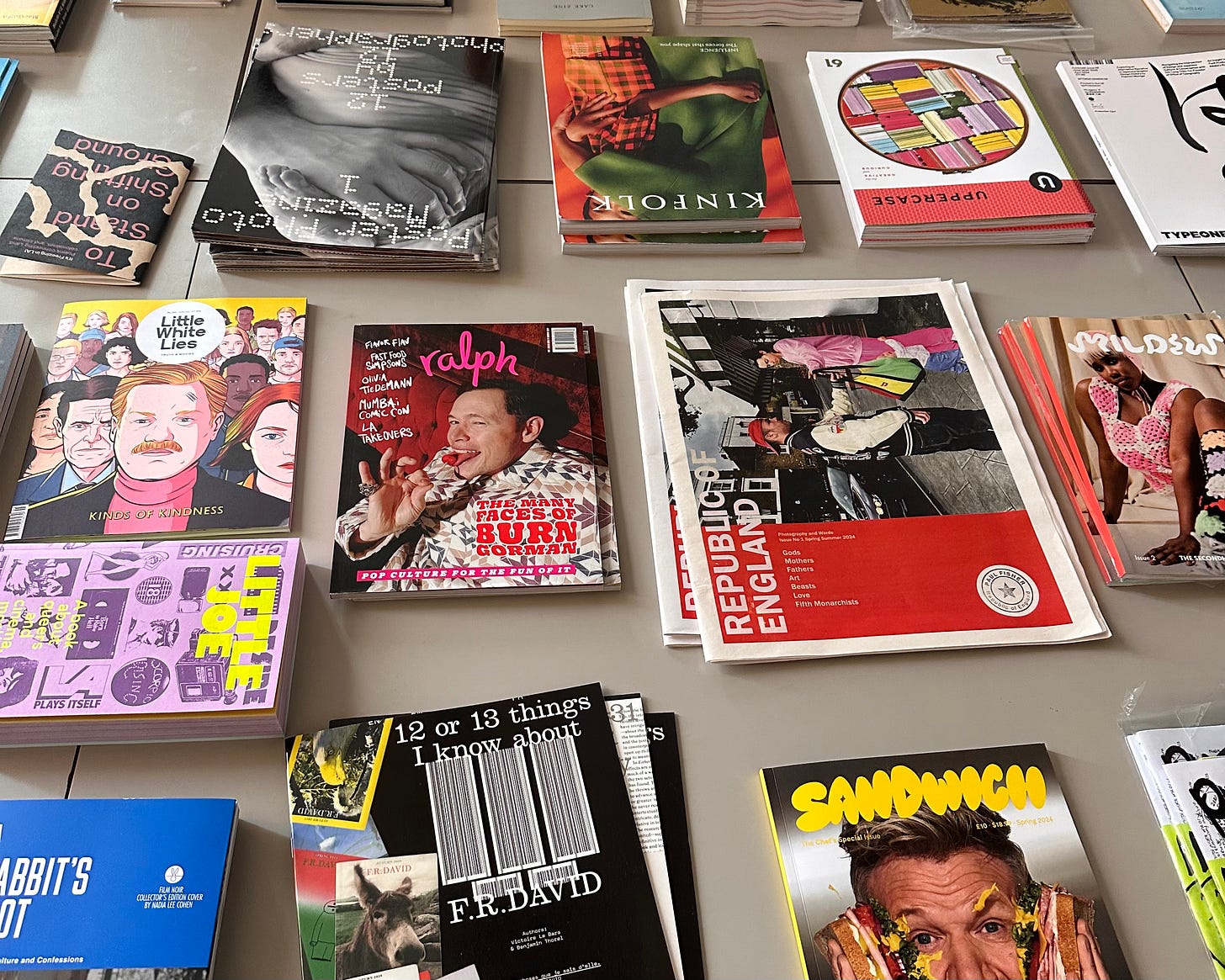The media landscape will only get weirder
We often hear that content creators are replacing journalists. It's not that simple.

This past Wednesday, in a post titled "Touch Paper," Substack relaunched Substack Reads under a new name: The Substack Post.
The name "nods at publishing predecessors like the Washington Post and the New York Post, which themselves evoke the historical gathering place for news," Substack co-founder Hamish McKenzie wrote. "Though it’s digital, The Substack Post is here to remind you of the pure pleasure of touching paper—of engaging with culture that feels intentional, lasting, and real," he added, noting that "maybe one day we’ll even bring you a print edition."
Many commenters responded positively, with some clamoring for a print publication. Others pushed back at McKenzie’s framing of Substack as a more thoughtful, less noisy alternative to other online platforms. With features like Notes and follower counts, it is hard to argue Substack isn’t social media.
The new name makes it clear: Substack wants to eat legacy media’s lunch. To me, it underscores that as weird and fragmented as the media landscape already is, it will only get more so.
I sometimes hear the shorthand that content creators are "replacing" traditional journalists. That’s an oversimplification. At the same time, legacy media often posits itself as untouchable, as though creators could never live up to the standards of old-school papers. Yet many creators are already producing work that rivals and even surpasses what comes out of traditional newsrooms.
For one of my final stories for my college paper (see my meme), I wrote about the evolution of print media in and around Columbia University. Though it focused on the campus, Morningside Heights, and West Harlem, much of what I found reflects broader changes across the media landscape.
Publications, both big and small, encompass multiple platforms: websites, newsletters, podcasts, print issues, TikTok and Instagram pages. Their social media channels are not just link repositories but outlets for reporting, brand building, and analysis in their own right.
For that story, I spoke with media literacy influencer Kelsey Russell, who built a platform on TikTok by posting videos reading print newspapers and providing other media commentary. In addition to discussing the intersections between print and digital media, she talked about the divide between influencers and journalists.
For things like events or product launches, "now, companies are a lot more likely to call an influencer over a journalist," Russell said. "Ultimately, what an influencer has is reach." She also noted that many people have turned to influencers because of the limited and biased ways they have seen themselves represented in traditional journalism.
Russell also noted the pitfalls of relying on influencers—who generally are not operating with the same code of journalistic ethics in mind—to provide accurate and unbiased information.
The two professions have already converged a fair amount. Becoming a "journo-influencer" increasingly seems like a necessity, especially for early career reporters trying to break into an industry with limited opportunities and job security.
Meanwhile, influencers and creators are filling roles that had previously been held by magazine editors: recommending makeup products and spring fashion steals, sharing dinner recipes, even dishing out celebrity gossip.
The rise of "newsfluencers" and the appetite for curated news and commentary on platforms like Substack and TikTok also show that news consumers are unsatisfied and overwhelmed by what legacy media alone can offer.
Much of this curated news is, of course, repackaged mainstream media reporting, whether consumers realize it or not. Journalists often bristle at seeing their work screenshotted and paraphrased on TikTok, especially when the byline is conveniently left out. I’ve had this frustration at times myself. A 10-second TikTok summary can leave out context and introduce inaccuracies (or misunderstandings of certain reporting choices).
Still, there is nothing necessarily preventing creators from doing their own reporting and rigorous research and analysis. More will likely start doing so. The access influencers have to certain spaces (like Fashion Week or brand events) can also facilitate this. Having large audiences can often encourage people to send tips or pass along the inside scoop.
There’s also a continuous, multidirectional flow between different nodes of the media ecosystem. Journalists at both legacy and newer outlets report on online trends and TikTok discourse. TikTokers bring screenshots of New York Times articles onto the platform to critique and discuss.
All of these factors combined—medium (social + print + website + newsletter + audio + video) + author (creators + journalists + podcasters + influencers)—mean we’re working with countless ways to report and write.
It’s easy to feel pessimistic about the media landscape (and there are a lot of reasons to be). But we will also see many creative, innovative approaches that challenge legacy institutions and reimagine what journalism can look like.
Obviously, what I’ve written here is an incomplete picture. I’ll continue to write about the shifts we’re seeing for PHONE TIME in the weeks and months ahead.



It almost feels like you need to be an influencer or content creator to succeed in any field that is attempting to "evolve" alongside the digital landscape, at this point XD